How to drill a well: a step by step guide and helpful tips
Independent water supply is sometimes simply necessary, as it is very expensive to maintain a centralized water supply system to every house remote from the highway. But how to drill a well in the country with their own hands, if you do not have the opportunity to hire a professional drilling crew?
We will talk about the methods of drilling and give a detailed guide to the independent production of work.

Drilling of the wells
Ways

Water production interests a person throughout its history.
Therefore, there are more than enough ways to drill wells for water, but we will consider only the most relevant options for us, namely:
- Auger (rotary) drilling. For work they use a screw - the most common Archimedes screw (who saw an ice drill - must understand), which, when rotated, captures the rock with a spiral strip of hardened steel and delivers it upwards. Allows you to drill shallow wells manually, or using a motor drive (depth up to 8 - 12 meters);
- Shock rope method. For work they use the force of gravity of the Earth: the drill falls from a height and breaks through the rock, which is then pulled out with a shell or a drill glass. The method is rather time-consuming, but it allows you to manually dig deep enough wells;
- Abyssinian well. For punching the soil using the so-called "needle" - a pipe with a sharp tip and perforations for water intake, which is driven into the ground to the desired depth. For hammering the pipe, you can use a shock woman or a sledgehammer. The bottomhole depth is from 3 to 8 m.
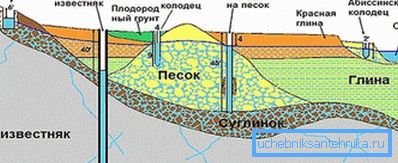
Note! In terms of depth and type of aquifer, there are three types of wells - wells “on sand” (depth up to 50 m), wells “on limestone” (depth up to 200 m) and wells (depth from 3 to 8 m). Of course, the deeper the well, the cleaner the water in it, since the thickness of the natural filter is greater.
The well is distinguished by the fact that water is pumped out of it by a surface manual or electric pump. The possibilities of such a device are limited by the height of the water column, so you will not be able to pump water from a depth greater than 8 meters.
The most realistic way to build a well "on the sand" or the Abyssinian well. Drilling of artesian wells (those that are “on limestone”) is a complicated and time-consuming business, which is better to be entrusted to professionals, despite the fact that the cost of such work is quite high.
The choice of drilling method
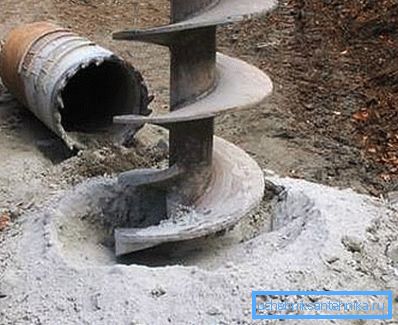
To determine how to drill a well, you need to establish at what level the aquifer is located.
To do this, you can act in two ways:
- To make "exploration" among neighbors or fellow villagers - surely someone will find a well. You can also use a well located nearby and measure the water level in it - this will be the desired value if you are interested in a shallow well;
- Find out all the necessary information in the local geodetic survey. Such organizations have all the necessary data, but obtaining this information for obvious reasons may be accompanied by red tape.
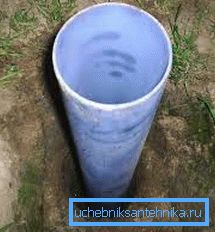
Note! To drill a hole “on the sand” using the auger method, you will need to figure out the depth of the impermeable layer of the rock under the sand, since you will have to dig just before it. This information is needed to determine the number of additional bars for the transmission of torque to the drill.
So we figured out the depth of the aquifer. If this value does not exceed 5 - 7 meters, then you can use the usual hand-held drill (with or without a motor) or hammer the “needle”. For the excavation of a well “on the sand”, or if the depth is large enough (15 meters or more), it is better to use the impact-rope method of development.
Note! Drilling by a screw to a greater depth is complicated by the fact that after each pass for a screw length (500-700 mm) the whole column has to be taken out, disassembled, cleaned and reassembled. It takes the lion's share of time and energy. The shock-rope method is also rather slow, but at the same time the expenditure of forces is lower, and the quality of the excavation is higher.
Manufacturing jobs
Abyssinian well
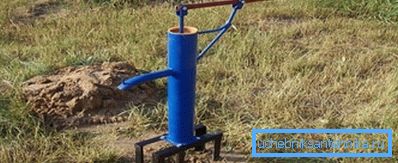
The Abyssinian well was named because of the first place of its mass use - Ethiopia, which used to be called Abyssinia. Today this device of a well can be seen in any settlement, call it a column.
The main advantage of such a well is its compactness and the ability to use a mechanical water injection system that works without electricity.
Next, we will tell you how to drill a well yourself on the principle of the Abyssinian well:
- Determine the location of the well. It does not take up much space and can be equipped right in the basement of the house. The only condition is remoteness from septic tanks and compost pits, as well as other sources of soil contamination;
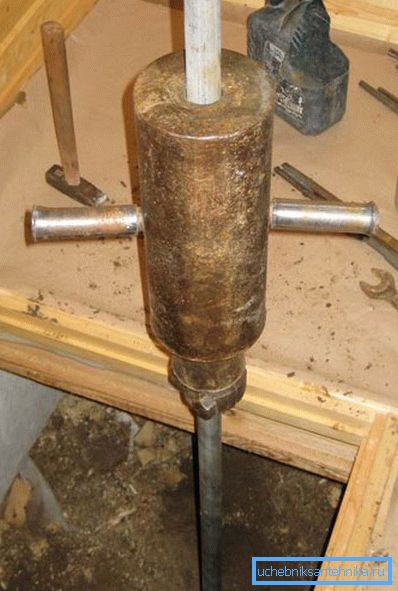
- We take a pipe section (length - about 100-110 cm) of an inch diameter with a welded cone-shaped pointed tip (needle) and perforations along the surface of the body. We put a stainless steel wire mesh on the pipe, which we solder with tin or fix by means of clamps;
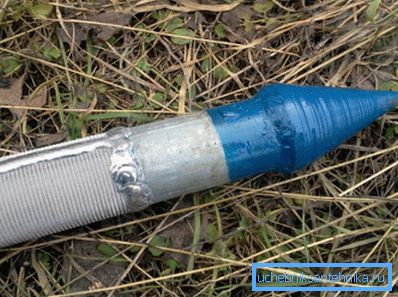
- Cut a hole with a sledgehammer in the ground. Use a wooden cover so as not to bend the edges. We wind the clutch and attach the next piece of pipe, put the washer on the pipe so that it stops on the clutch. Next, take a pancake from the bar (the weight depends on your athletic data) and put it on the protruding segment, lift it to the top of the segment and let it go down - we hammer the pipe further;

- Then we wind up new segments and also drive them into the ground.. When the process becomes abruptly easier, we lower the probe into the pipe and check for the presence of moisture. As soon as the moisture appeared - we hammer the pipe another meter;
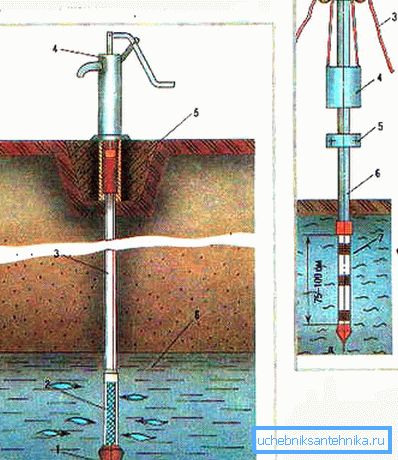
- At the upper end of the pipe we wind the pump and pump the water until it becomes transparent.. Take water samples to determine its suitability for drinking; (See also the article Which Pump is Better for a Well to Choose.)

- Place the exit pipe concrete, install pumping equipment and connect it to the water supply. In the plumbing system is better to have a special sump for additional filtration of water.
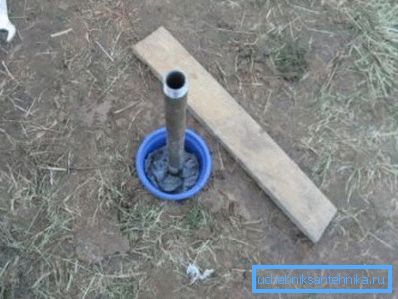
Note! If the depth of the aquifer is large, or the rock is too hard, an ordinary screw auger can be used to pass the soil.
Well by the shock method

If you want to equip a well “on the sand” with a sufficiently large depth, you should use the shock-cable drilling method. To do this, it is necessary to assemble a tripod of steel pipes or wooden bars, as shown in the photo above.
On the top of the tripod, we fix a block through which we pass a steel cable or a strong rope. To the free end of the cable hang the drill glass, the other end is wound on a winch or well gates.
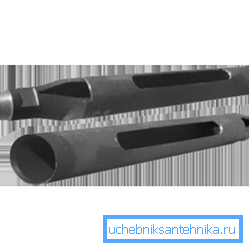
Glass hammer into the ground and retrieve with a winch. We get the land and the process is repeated, constantly delving. When the glass goes underground, it should be lifted and thrown under its own weight until it is filled with earth.

If the rock becomes loose, and will not keep in the glass under the action of friction force, then we hang the shell with a non-return valve and remove the rock. For solid layers, use the chisel, which break the layer, and then we get a scaffold.

When the aquifer goes, we insert a perforated casing into the well and a steel mesh filter at the end. To it we mount the next piece of pipe and deepen. So we do until the column of pipes does not rest against the waterproof bottom of the sand aquifer.

From the pipe with the help zhelonki smaller diameter, remove the sand and water. If the mixture is too liquid, it can be thickened by adding sand or earth. At the bottom of the pipe we fall asleep a layer of gravel 20-30 cm deep.
We lower the submersible water pump into the pipe and pump the water to a transparent state. Next, we concrete the gap between the pipe walls and the well; if necessary, we insulate. We connect the water supply system and make a blind area and a canopy over the well to prevent the entry of the water pipe.
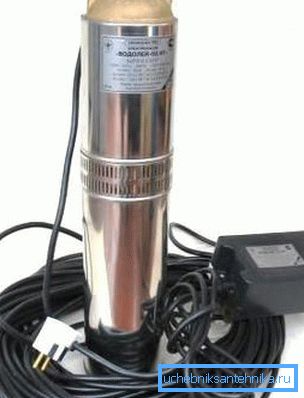
Note! This instruction is maximally simplified and is for informational purposes only. For more detailed study of the issue read the subject articles on our website.
Conclusion
We have shown how to drill a well at home without the participation of professional teams with minimal material costs. For a complete visual impression, we offer you the video in this article.